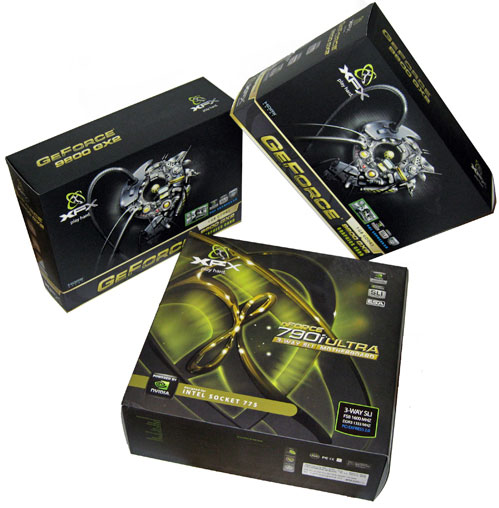
Results

3Dmark 05 shows an advantage of 8 percent, while the 3Dmark 06 results are 22 percent higher. In games, the 9800 GX2 is even faster, so both of these marks just don't do it justice.

In World in Conflict the 9800 GX2 is 15 to 23 percent faster than the Ultra.

At 1920x1200 the XFX 9800 GX2 is 26 percent faster. At lower resolutions the difference is even bigger, jumping to 65 percent.

The 9800 GX2 is 21 to 30 percent faster.

At 1280x1024 the GX2 is 37 percent faster and at the highest tested resolution the advantage is even greater, 57 percent. In spite of that, 1920x1200 is still not playable on these cards. Without AA at 1600x1200 the Ultra scores 53 percent less.

Apart from 1600x1200 without AA, XFX 9800 GX2 is more than 60 percent faster than the 8800 Ultra. At 1600x1200 it's "just" 51 percent faster, which is still an impressive score.

Unlike Call of Juarez, Half Life Episode 2 did not utilize the dual GPU card's potential. Only at the highest resolution we can see that the 9800 GX2 is much more powerful, as it scores 45 percent more.
Conclusion:
XFX 9800 GX2 clearly outperforms the 8800 Ultra. It is about 25 percent more expensive than the Ultra, but it scores at least 25 percent more. As you can see, all games except Crysis are playable at 1920x1200 with 4x AA and 8x Aniso. It's a dual slot card and it can be installed in all chassis capable of dealing with other dual slot solutions.
Although there was much talk about this card's heat, we believe that it's not a major issue. The GPUs don't ever go over 82°C, but it will dissipate a lot of heat, so it's best to invest in some case cooling just as a precaution. Thanks to its stunning performance, we can easily recommend XFX's 9800 GX2 and any 9800 GX2, for that matter.
